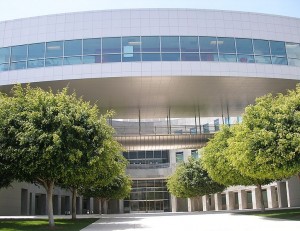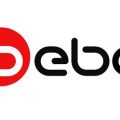How Tom Anderson And Chris DeWolfe Founded Myspace – History
A Short History Of MySpace and Founders Tom Anderson And Chris DeWolfe
Oh, how the mighty have fallen. What was once the proving ground for social media has since become the punch line of many jokes. The history of MySpace.com is a tale of energetic innovation, risk, and ultimately, failure to capitalize. While some people believe that MySpace was the original social networking site, it is actually based on an existing model that was functionally successful for its time. In August of 2003, several employees of eUniverse, now called Intermix Media Inc, recognized the growing potential of a social networking site where they all had accounts (Friendster). Copying the model and losing the less popular features, the employees created a working prototype design for what they coined as MySpace. All the work was done in only ten days, in which the first version of MySpace was actually built. The project was headed by Tom Anderson who started as the CEO of the new company and Chris DeWolfe who became its president. These two guys are nowadays recognized as the founders of the company.
eUniverse provided the resources necessary to launch the site, providing everything from programmers to project leaders, as well as needed funding. The first people who used the site were the employees of the company. In order to garner initial interest, recruiting users became an office contest. eUnivere’s massive contact list of over 20 million enabled them to hit the ground running in terms of traffic.
Early on the founders disagreed about charging for the service, although eventually it was decided to keep the features free and open to the public instead of cashing indirectly from their users.

MySpace’s office in Beverly Hills. Photographed on April 21, 2007, by user Coolcaesar, src. wikimedia.org
The founding company was bought in July 2005 by the owner of Fox News. Rupert Murdoch’s corporation took the concept of MySpace global, extending the site into other language markets like the UK and China. The sudden rise in popularity, with the ease and accessibility offered by the new medium, led to MySpace becoming an industry leader.
Once valued at $12 billion, MySpace was actually consistently beating out competitor Facebook for traffic. Its once progressive innovation, however, soon became stagnant. The lack of foresight into what users demanded led to its initial downfall and the mismanagement of the property pushed membership down to record-low numbers.
In April of 2008 Facebook succeeded in pushing its traffic rating beyond what MySpace was registering. Ever since then MySpace has been unable to compete with its social media rival. A number of factors are referenced when the former executives discuss the downfall of the site.
Advertising over-saturation, slow load time, a lack of innovative features, and content based on simple concepts have all reportedly contributed to the loss of traffic and membership. Confusing tutorials, templates, and a lack of direction also served to keep new users from signing up. Other social networking sites were allowing third-party developers to build content that would quickly become popular.
MySpace was dedicated to developing everything on its own, rejecting other material from other developers. This meant that MySpace was not able to quickly keep up with the design elements that users were demanding, and the lack of new features and content made them appear outdated.
Hackers targeted MySpace, along with phishing scams, malware, and spam. MySpace programmers were unable to protect their users from these things, making the online community inhospitable and unattractive to younger members whose parents were monitoring their activity online.
Major shake-ups in the company’s corporate structure began when expectations and revenue were not met. Two founders, Chris DeWolfe and Tom Anderson, were no longer favored at their parent company. Peter Chernin, the President and COO of the parent company, left office. Anderson stepped down from his role as President, and DeWolfe was replaced as the CEO.
Two major layoff rounds occurred, first a 30% decrease, and then a 37.5% decrease in the total workforce.
In an attempt to become more relevant, MySpace changed from a social networking site to a self-proclaimed social entertainment site. The main difference was a larger focus on movies, music, and gossip. Greater interconnectivity with once rival Facebook also allowed the site to become more accessible and attractive to users.
When the site went up for sale with a hefty price tag of between $50 and $200 million dollars, very few interested parties came to the negotiation table. In the end, it was Specific Media that purchased the site. While the initial cost was not disclosed, CNN reported that it had sold for only $35 million. As part of this deal, Justin Timberlake was to take partial ownership of MySpace to help develop the site.
Even though the fall of MySpace has been very public, and it is no longer considered a safe investment concerning social media, it still nonetheless led the way originally for innovation in the industry. MySpace proved that growth is required to remain cutting edge and successful, as the finicky users will abandon the property if it is not maintained and moving forward.




